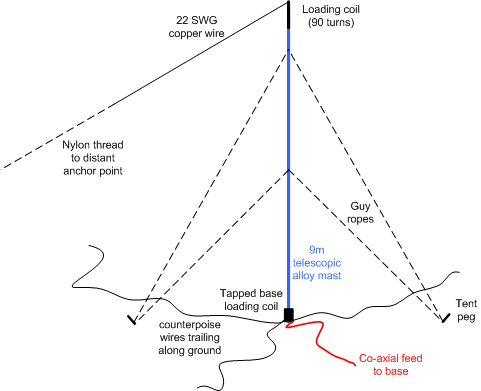
Following the success of my centre-loaded vertical designs, I've been trying to improve their efficiency, by raising the height of the loading coil (thus extending the radiating vertical section)
The loading coil now sits right at the top of the mast, and the resonating wire is suspended from here, and anchored by a long nylon cord to a convenient point.
The aerial has thus mutated into a top-loaded inverted-L.
I've also added some more counterpoise wires along the ground.

Another mast conversionThis design uses a number of tubular aluminium sections, in the form of a telescopic mast around 9m high. The mast's tripod base is insulated from ground by standing it on insulators (bricks), so that it can be base-fed directly.
As the top (resonating section) is much longer (around 9m) than in my centre-loaded vertical , I needed a smaller loading coil (around 90 turns). |
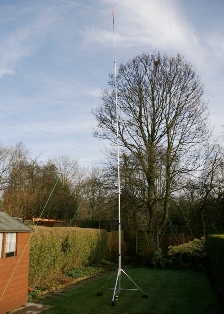 |
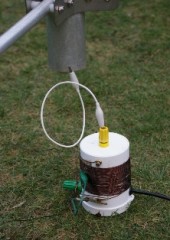 |
The antenna is base-fed, and resonates at around 2.0 MHz, so a series base-loading coil is used to shift the resonant frequency down into the Amateur band. A simple tapped coil is shown on this prototype. The four counterpoise wires are attached to the feeder at the base of the antenna. |
The entire mast is isolated from ground by standing it on insulators, and insulating plastic ropes are used for the guy-wires. |
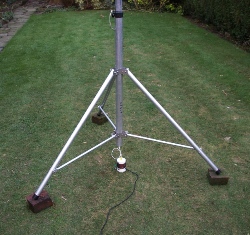 |
 |
The loading coil is installed on a plastic tube slotted into the top of the upper alloy mast section. The far end of the resonating wire is attached to a long nylon cord, and tied off to a convenient object on the ground. |
With its longer radiating section, this version does seem to be more efficient, and offers a wider bandwidth (without retuning) than the centre-loaded designs.
Tests with a local fixed and mobile stations on the ground-wave produced 10 to 20dB stronger signals than on a (low-down) end-fed 120ft wire.
A portable version of this antenna was assembled at a temporary site near Chepstow, from where I had strong signals around the UK and to and from Norway.
Some years later I used the seven lower sections of a 9m telescopic fibre-glass fishing rod as the vertical support, with some of my 22SWG wire spiralled around it. Even without guys, this is strong enough to support my loading coil at the top, and although it's quite flexible and waves around in the wind a fair amount, I've left enough slack in tying off the horizontal section, so it's never snapped.
My switched base-coil is cable-tied to the bottom of this rod, and the whole lot is strapped onto a short metal tube which slots into a hole set in the lawn (formerly for a rotary clothes-airer!). My ground-wires terminate at a bolt set into the buried concrete base, so that I can quickly attach the ground connection with a wing-nut. This means that I can easily take down the antenna and lie it down beside the hedge when I'm not using it, or need to mow the lawn!
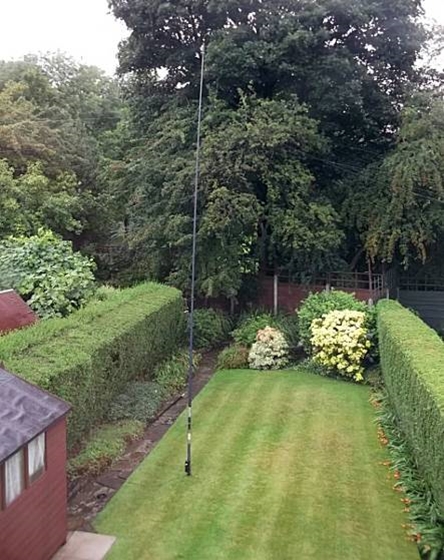
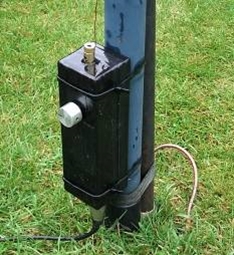
In November 2014, I measured the swept-frequency characteristics of this antenna using my newly-built FoxDelta antenna analyser.
The different coloured curves are for six different settings of the base-coil:
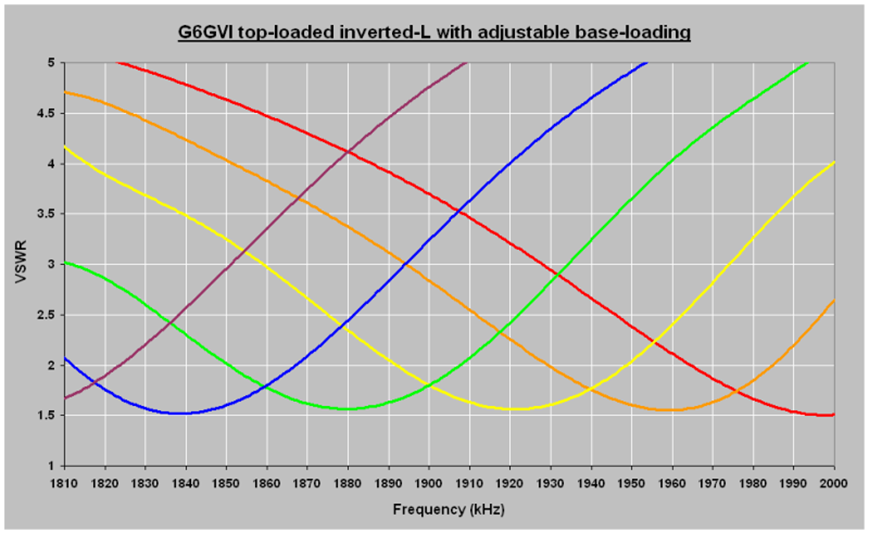
So I can select any portion of the band simply with a 6-way switch (in fact it's a 12-way switch, so I could always move the taps closer together, and get even finer resolution across the band).
My latest experiment has been to change the loading arrangement: instead of a loading coil at the top of the vertical resonated with a sloping capacity-tail, I've now extended the sloping section to reach the bottom of the garden, where it is end-loaded with a similar tuned tail. This has extended the bandwidth:
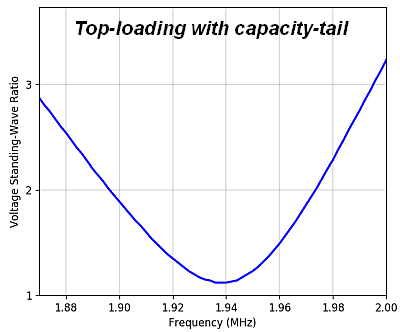 | 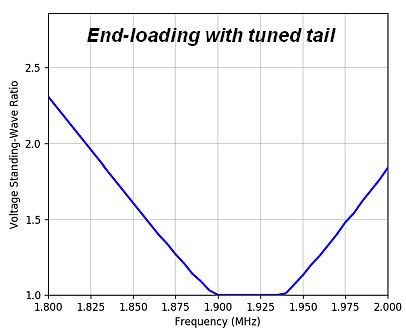 |